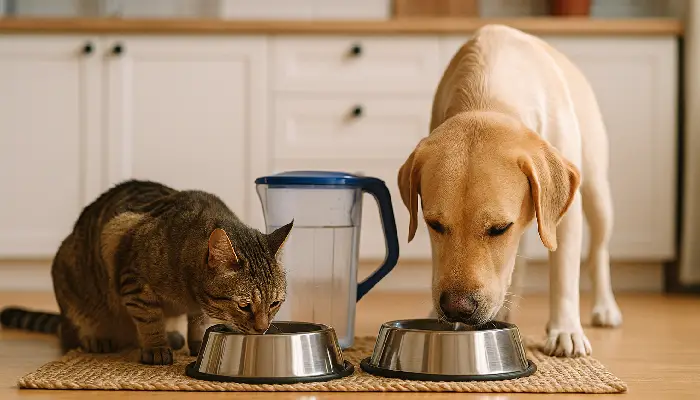The Importance of Daily Hydration for Dogs and Cats
Water is essential for life—not just for humans, but for our furry companions too. While food often gets more attention, proper hydration is just as critical to your pet’s health. In this article, we’ll explore why daily hydration matters and how to encourage your dog or cat to drink more water throughout the day.
Why Hydration Is Crucial
Water plays a vital role in nearly every bodily function in pets:
- It regulates body temperature
- Supports digestion
- Lubricates joints
- Flushes out toxins
- Keeps skin and coat healthy
Even mild dehydration can lead to fatigue, dry nose or gums, and more serious health issues over time.
Signs Your Pet May Be Dehydrated
While some signs are obvious, others are more subtle. Look out for:
- Dry or sticky gums
- Sunken eyes
- Lethargy or weakness
- Loss of appetite
- Less frequent urination
If you notice these symptoms, encourage water intake and monitor closely. Severe dehydration requires veterinary attention.
How Much Water Do Pets Need?
On average:
- Dogs need about 50–60 ml of water per kilogram of body weight per day.
- Cats generally need around 45–55 ml per kilogram.
Keep in mind that active pets or those in hot environments may need more.
Tips to Encourage Daily Drinking
Some pets don’t naturally drink enough—especially cats. Here’s how to help:
1. Keep Water Bowls Fresh and Clean
Change the water at least once or twice a day. Clean bowls with warm water and mild soap to prevent buildup of bacteria and slime.
2. Use Multiple Water Stations
Place water bowls in several rooms so your pet always has access. This is especially helpful in larger homes or multi-pet households.
3. Try a Pet Water Fountain
Cats are especially drawn to moving water. A fountain can stimulate their natural curiosity and encourage them to drink more often.
4. Add Water to Food
Mixing a small amount of water with dry kibble or switching to wet food can help increase hydration, especially in cats.
5. Use Ice Cubes as Treats
On hot days, some dogs enjoy licking ice cubes. Just make sure they’re not too hard to avoid dental injury.
6. Offer Broth Occasionally
Low-sodium, pet-safe broth can be a tasty way to add fluids. Make sure it contains no onions, garlic, or harmful spices.
Make Water Part of the Routine
Integrate hydration into your daily care routine:
- Clean and refill bowls in the morning and evening
- Place a bowl near your pet’s sleeping or play area
- Observe and note how much they drink daily
Creating a consistent routine encourages steady hydration habits.
Hydration and Health Go Hand in Paw
A well-hydrated pet is more energetic, alert, and overall healthier. While dehydration can happen quietly, maintaining proper water intake is one of the easiest ways to support your pet’s long-term health.
It’s a simple act—offering fresh, clean water—but it speaks volumes in the care you provide.

